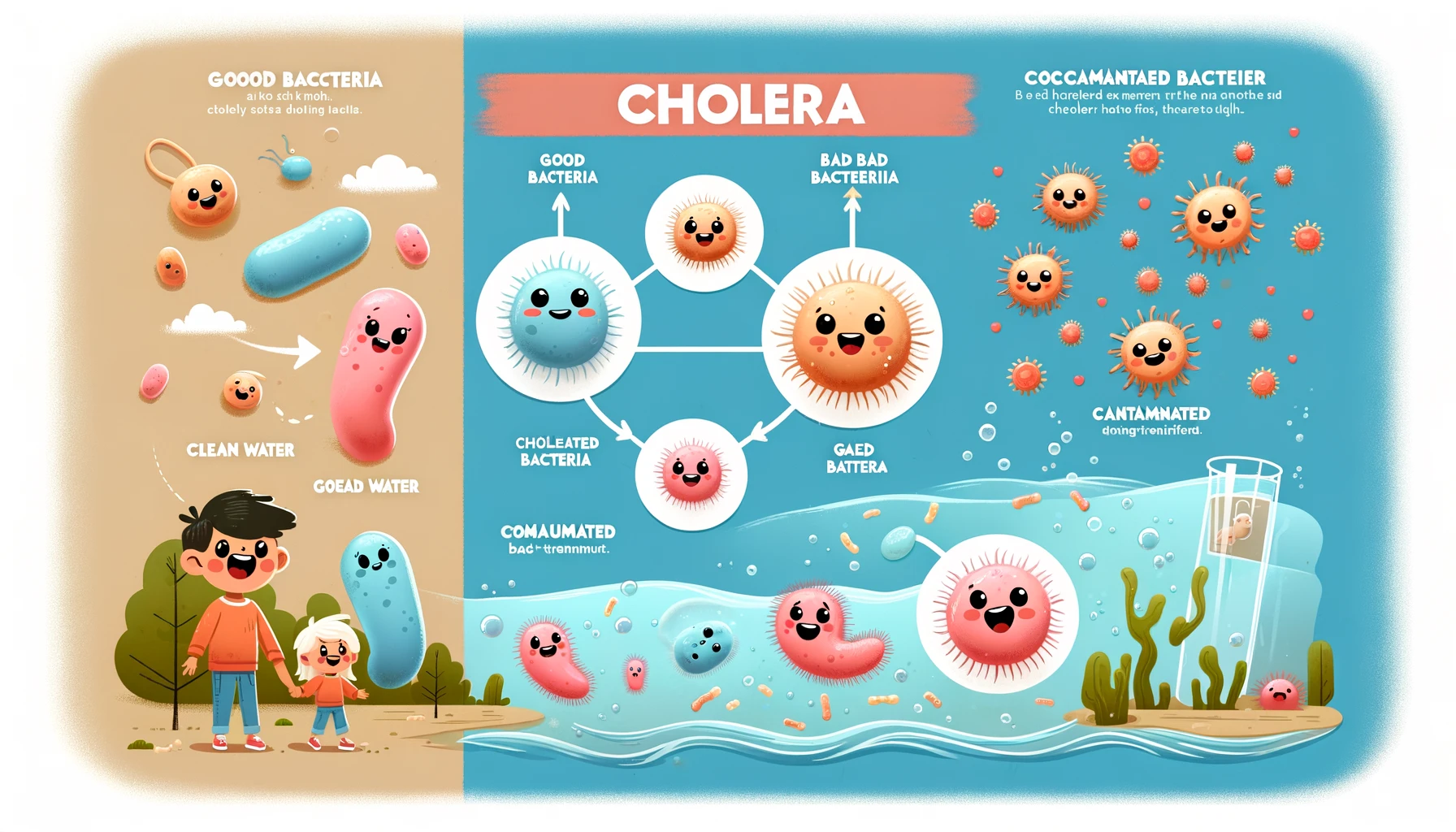Understanding Cholera: Causes and Symptoms
Understanding Cholera: Causes and Symptoms
Table of Contents
- Introduction to Cholera
- Causes of Cholera
- Vibrio Cholerae Bacteria
- Transmission Methods
- Symptoms of Cholera
- Early Symptoms
- Severe Symptoms
- Risk Factors
- Complications of Cholera
- Diagnosis and Treatment
- Prevention Strategies
- Conclusion
- References
Understanding Cholera: Causes and Symptoms
Introduction to Cholera Cholera is an acute diarrheal illness caused by infection with the bacterium Vibrio cholerae. It can cause severe dehydration and, if left untreated, can be fatal. Cholera is a significant public health concern, especially in areas with inadequate water treatment, poor sanitation, and limited access to medical care. This article explores the causes and symptoms of cholera, helping you understand how to recognize and prevent this infectious disease.
Causes of Cholera Cholera is caused by the bacterium Vibrio cholerae. Understanding how this bacterium spreads and causes illness is crucial for preventing and controlling outbreaks.
Vibrio Cholerae Bacteria
Vibrio cholerae is a gram-negative bacterium that produces a toxin called cholera toxin. This toxin binds to the walls of the intestines, causing cells to release large amounts of water and electrolytes, leading to severe diarrhea and dehydration.
Transmission Methods
Cholera is primarily transmitted through contaminated water and food. Key transmission methods include:
- Contaminated Water: Drinking water contaminated with Vibrio cholerae is the most common source of infection.
- Contaminated Food: Eating food, especially raw or undercooked seafood, that has been contaminated with the bacterium.
- Poor Sanitation: Areas with inadequate sewage treatment and water purification are at higher risk for cholera outbreaks.
- Person-to-Person Contact: While less common, direct contact with an infected person’s feces can also spread the bacteria.
Symptoms of Cholera The symptoms of cholera can range from mild to severe. Recognizing these symptoms early is essential for prompt treatment.
Early Symptoms
Early symptoms of cholera may include:
- Watery Diarrhea: Often described as “rice-water stools” due to its pale, milky appearance.
- Vomiting: Frequent vomiting, which can contribute to dehydration.
- Mild Dehydration: Symptoms include dry mouth, increased thirst, and slight weakness.
Severe Symptoms
If left untreated, cholera can progress rapidly, leading to severe symptoms such as:
- Severe Dehydration: Characterized by intense thirst, very dry mouth, sunken eyes, decreased urine output, and wrinkled skin.
- Electrolyte Imbalance: Can cause muscle cramps, irregular heartbeat, and shock.
- Shock: Severe dehydration can lead to a dangerous drop in blood pressure, rapid heart rate, and loss of consciousness.
Risk Factors Certain factors increase the risk of contracting cholera:
- Poor Sanitation: Living in areas with inadequate sanitation and clean water.
- Exposure to Contaminated Water: Drinking or using contaminated water sources.
- Eating Contaminated Food: Consuming food from unsanitary sources, especially seafood.
- Travel to Endemic Areas: Visiting regions where cholera is prevalent increases the risk of infection.
Complications of Cholera Without prompt treatment, cholera can lead to severe complications:
- Severe Dehydration: Can cause kidney failure, shock, and death.
- Electrolyte Imbalance: Can lead to dangerous levels of potassium and sodium in the blood, affecting heart and nerve function.
- Hypovolemic Shock: Severe fluid loss can result in a significant drop in blood pressure, leading to organ failure.
Diagnosis and Treatment Cholera is diagnosed through stool sample analysis to detect the presence of Vibrio cholerae. Treatment focuses on rehydration and, in severe cases, antibiotics.
- Rehydration: Oral rehydration salts (ORS) are used to replace lost fluids and electrolytes. In severe cases, intravenous fluids may be necessary.
- Antibiotics: In severe cases, antibiotics like doxycycline, azithromycin, or ciprofloxacin can reduce the duration and severity of symptoms.
- Zinc Supplements: Zinc supplements can help reduce the duration and severity of diarrhea in children.
Prevention Strategies Preventing cholera involves several strategies aimed at improving sanitation and hygiene:
- Safe Water: Ensure access to clean drinking water. Use water purification methods such as boiling, chlorination, or using water filters.
- Proper Sanitation: Promote proper sanitation practices, including the use of latrines and proper disposal of sewage.
- Good Hygiene: Encourage regular handwashing with soap and clean water, especially before eating and after using the bathroom.
- Safe Food Practices: Cook food thoroughly, especially seafood, and avoid consuming raw or undercooked food.
- Vaccination: Cholera vaccines are available and recommended for high-risk populations and travelers to endemic areas.
Conclusion Understanding the causes and symptoms of cholera is essential for preventing and managing this potentially deadly disease. By recognizing the signs early and implementing effective prevention strategies, individuals and communities can reduce the risk of cholera outbreaks and protect public health.
<ⓒ WizardMedics (wizardmedics.com)>



